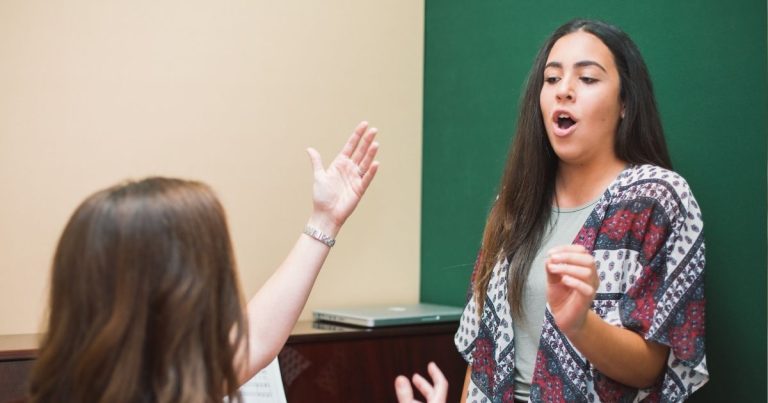Help your students sing with freedom and develop vocal flexibility with these three wholistic singing exercises.
Why is it that some singers can belt out a tune with ease and joy in the shower but are riddled with tension and anxiety when they perform in the studio?
And how can a vocal coach help a singer shake off the negative thoughts that are causing this tension?
Vocal coach Jeremy Ryan Mossman, a recent guest on the Singing Teachers Talk podcast, believes the answer is wholistic, experiential learning.
“The cornerstone of my belief is that the body already knows so much about what we’re trying to do – and we’re getting in its way,” he says. “If we can draw out this organic intelligence, this body knowledge, we can change things.
“When we’re using our whole self, we have our best performance moments. We’re out of our heads, sometimes even out of our bodies, and finding brilliance that exceeds our expectations.
“This happens [when we’re singing] in the shower or the car, but rarely when we’re in the practice room or trying to reach goals.
“However, when we sneak up on ourselves and give ourselves permission to go and discover without having any specific outcome, we discover things we didn’t know were possible.”
So, how can teachers help students “sneak up on themselves” to gain a greater understanding and awareness of their bodies and instruments? Jeremy shares three wholistic singing exercises on the podcast to help students explore and experiment (without pressure).
Exercise 1: Experiment with movement and speed (especially good for jaw tension)
“One of my favourite things to do when a singer feels tension in their jaw is to encourage them to move it slower and smaller – and slower and smaller,” Jeremy says.
“I then ask them to do it half as big and twice as slow, and again – half as big and twice as slow. As there’s no end point, they’ll go on into infinity and probably find themselves in a meditative state.
“Eventually, they’ll become aware of a host of connections. Yes, they’re moving in a way that might be invisible to an objective eye, but it’s very sensual. For the person moving, something will shift. Their brain and subconsciousness are watching the whole thing and mining out so much more than their conscious awareness possibly could.”
You could vary this exercise by asking a student to transfer the weight on their feet slowly and observe how that shift feels in the rest of their body.
“Functionally, it’s important to find freedom in our movements, so we have choice because choice is what artistry is about.”
Exercise 2: Change shapes and positions
“Another favourite game is to encourage a student to maintain the outcome but change the mouth shape or body orientation,” Jeremy says.
This exercise can be particularly relevant to a student who, for example, has a physically taxing musical theatre role where they won’t just be singing in an upright position.
“It isn’t just about singing on the feet; it could be singing lying down, singing in a downward-facing dog position or a plank,” he says. “It’s about exploring a variety of different orientations to gravity while holding the intention of the intended outcome.
“We don’t want fragility in the outcome; we want resiliency and adaptability. Non-linear intentions can excite the brain to find a new pathway and a new way of getting to the same outcome.”
This approach comes with an obvious caveat: if something hurts, stop doing it.
“Our senses are our guide. The ease of vocalisation is a wonderful reference point. If a game leaves you so confused that you’re just feeling tight, you’re not ready for that game.”
Exercise 3: Silent singing
Jeremy came up with this exercise after watching Drag Race and admits that it seems counterintuitive.
“Turning the voice off is a way of bypassing habits,” he says. “It’s such a powerful strategy that makes no sense on paper, but experientially, it can be so rich.
“What I noticed when watching Drag Race is that when performers lip sync, what I’m seeing is right – what they’re doing is what it would look like as if they were singing. But that person who is lip-syncing is just moving their mouth.”
To start, ask a student to lip-sync a favourite song. Then, ask them to lip sync as if they’re angry or sad.
“Silent singing or lip-syncing can really light up a different feedback loop and get sensations.”
Learn more
Listen to the full, fascinating podcast interview with Jeremy, where as well as discussing wholistic singing exercises, he talks about:
- Fascia – his insights are fascinating (and a tiny bit gory)
- How and why he avoids portraying himself as the ‘expert’ in the singing studio.




